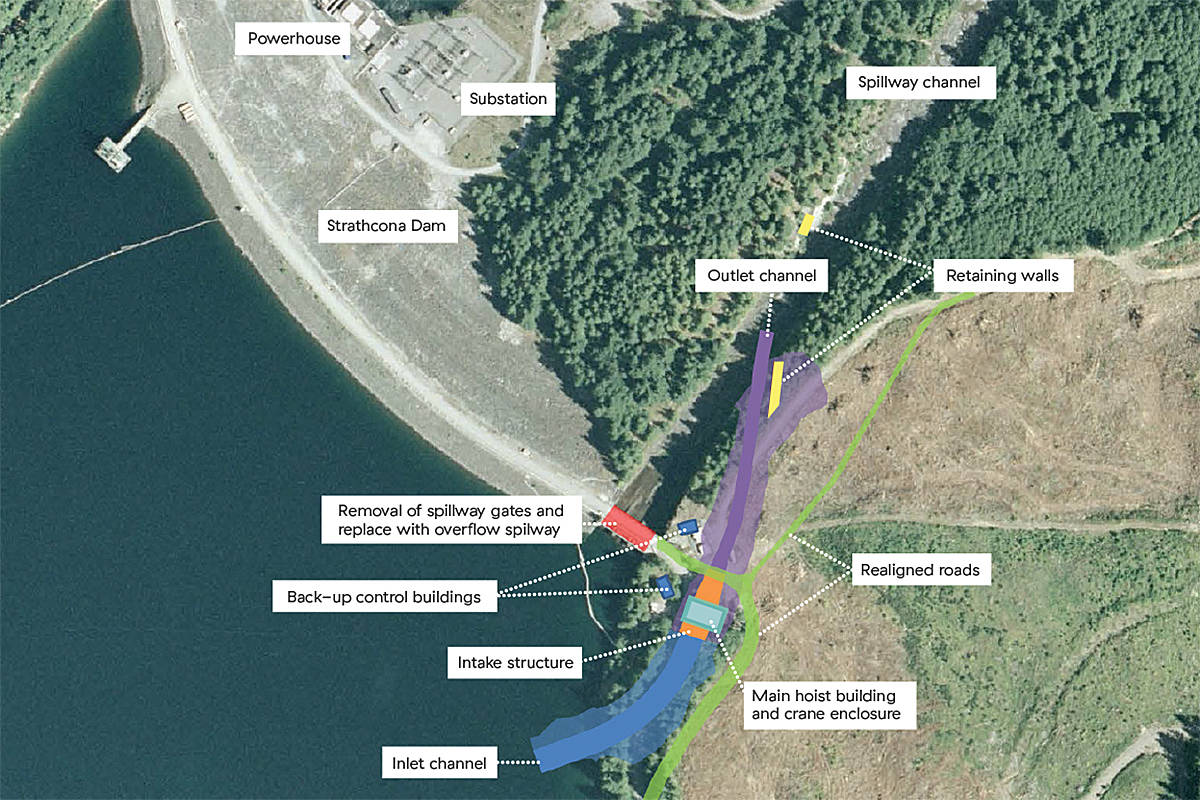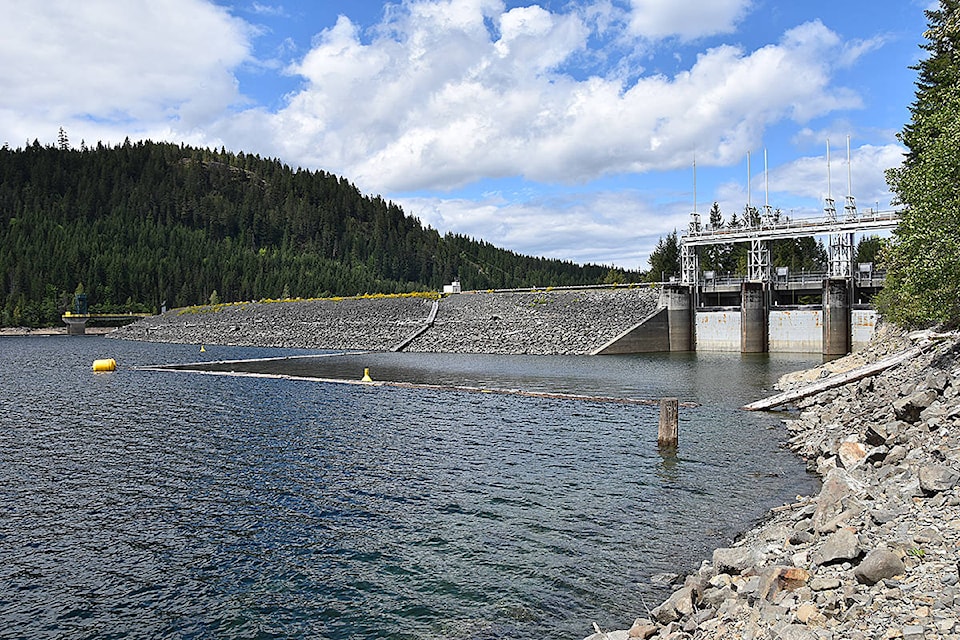Design work continues on BC Hydro’s Strathcona Dam upgrade in hopes of getting BC Utilities Commission approval in 2022.
The design of the water discharge upgrade to Strathcona Dam will allow for BC Hydro to draw down the Upper Campbell Reservoir level after a severe earthquake.
The upgrades will also provide better downstream water management reliability for downstream fish habitat flows to flood risk management.
“For a few years now we have been meeting and consulting with First Nations, government agencies and stakeholders on the project as we continue to refine the design,” says BC Hydro spokesperson, Stephen Watson. “While day-to-day it is very safe, the Strathcona facility has deficiencies that may limit its ability to operate or cause it to fail following a severe earthquake. A new low level outlet, which is a deep excavated channel, will allow us to lower the reservoir level after an earthquake to minimize risks to the dam. The final design will ultimately be developed and then we’ll go to the BC Utilities Commission for approval in around 2022.”
For BC Hydro there are two main project objectives.
First, to excavate a deep channel in bedrock on the right bank of the dam, and then construct a new water release outlet structure to allow for a deep reservoir level drawdown. The new structure is planned to be about 32 m long, 17 m wide, and 29 m high. The concrete structure will house two water discharge gates. The gates will allow the reservoir to be lowered below the normal operating level, which will reduce the risks to the dam. It will also provide downstream flood risk management operations. The channel length is about 330 metres.
Second, the project will remove the three 61-year-old spillway gates and hoist system and construct a new concrete passive overflow spillway. The crest of the spillway will be positioned so water only free-spills during large storm events. The two new gates within the excavated low level out channel will provide improved water management flexibility for fish habitat flows, power generation and flood risk management.
Watson said there are currently no plans to lower the water level at Upper Campbell Reservoir/Buttle Lake during construction. Construction of the low level outlet channel will take place downstream of a temporary rock plug, which is a portion of the channel at the upstream end that will be excavated last. Work on the overflow spillway will likely take place downstream of a temporary bulkhead or during low reservoir periods. The project, when completed, will not change BC Hydro’s existing water license for storage levels or water release, though the utility will go through a Change of Works application to the Comptroller of Water Rights on the facilities modified configuration.
“We are looking to have funding approval and regulatory approvals, such as the BC Utilities Commission, by around late 2023,” said Watson. “The procurement process may also begin in 2022 and construction may begin in early 2024.”
Watson said the road across the dam will be temporarily closed for about three years during the construction period. The existing Strathcona Dam Campground is planned to be permanently closed as early as late summer 2020, with the new Upper Campbell Reservoir Campground opening around the same time. The new campground will be managed by BC Hydro in the same way as the existing campground.
RELATED: BC Hydro to relocate popular Campbell River-area campground to ‘Little America’
Information on the project, as well as the proposed John Hart Dam Seismic Upgrade Project and Ladore Spillway Seismic Upgrade Project, is available at BC Hydro’s Campbell River Hydroelectric Facilities Discovery Centre at the Elk Falls parking lots, which is open Tuesday, Thursday and Saturday. Project community engagement comment forms are available to be filled out.
The Strathcona Dam holds back water within the Upper Campbell Reservoir/Buttle Lake. It’s located about 32 km west of the City of Campbell River. Constructed in the 1950s as part of the Campbell River hydroelectric system, the Strathcona Dam is 53 metres high and 511 metres long, and is made of compacted earthfill with a concrete spillway structure. In 2010, BC Hydro seismically upgraded the water intake tower, which allows water to enter and pass through the dam to the generating station.
For any enquiries about the project, contact Stephen Watson at 1-250-755-4795 or steve.watson@bchydro.com.
RELATED: Hydro announces more dam upgrades worth ‘hundreds of millions of dollars’

